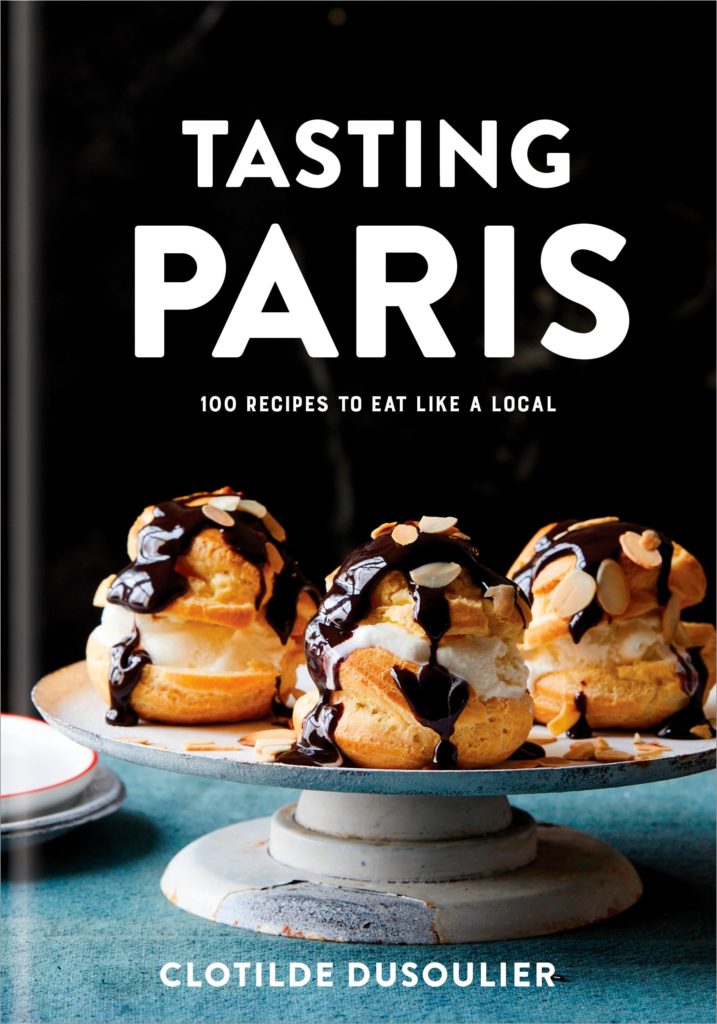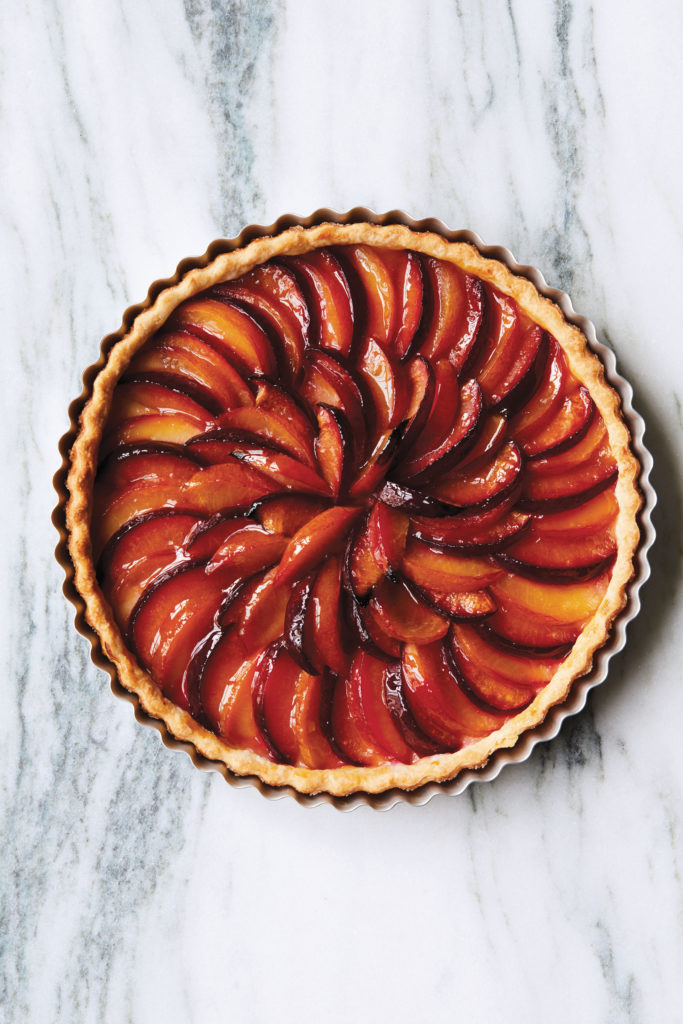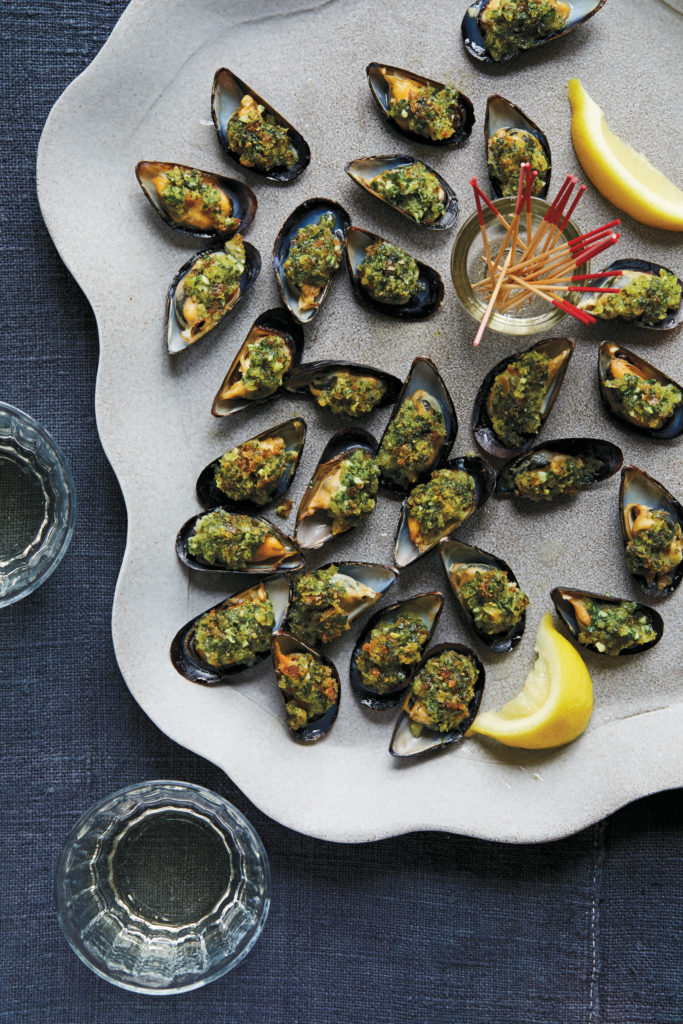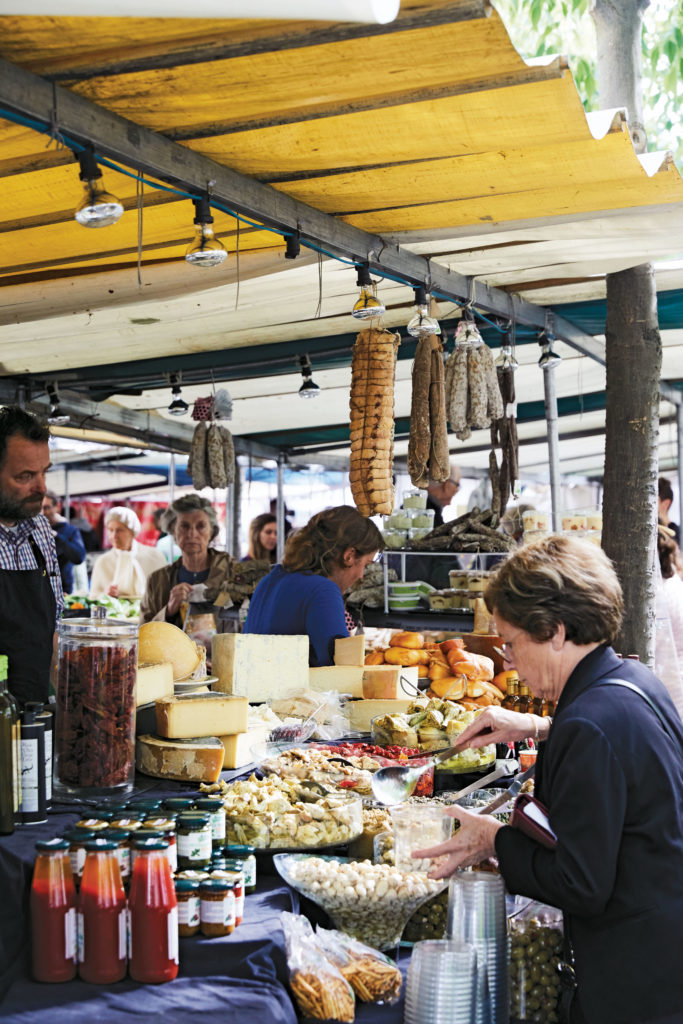Clotilde Dusoulier is one of the pioneers of food blogging. Although born and raised in Paris, she writes her blog Chocolate and Zucchini and books in English. One quality that consistently comes across in her writing is how much she cares. Cares about flavorful food, about family and friends, about sustainability, about seasonal ingredients, and about local markets.

Clotilde Dusoulier
Her new book Tasting Paris: 100 Recipes to Eat Like a Local is now available through bookstores and Amazon. Interspersed among the recipes are insider tips about Paris. I filled a notebook page jotting down ideas for eateries to try, market streets to return to, and proprietors I’d like to meet someday. The book almost serves double duty as a travel guide.
 Chapters are organized around the eating cycle of a day: morning, noon, afternoon, early evening, evening, and late night. The book opens with a recipe for an eye-opening café au lait and concludes with a recipe that will fortify anyone who happens to be awake in the wee hours of the morning (onion soup). It’s a fitting organizing principle for a book that celebrates eating like a local in Paris where residents talk, think, and dream about food nearly 24/7.
Chapters are organized around the eating cycle of a day: morning, noon, afternoon, early evening, evening, and late night. The book opens with a recipe for an eye-opening café au lait and concludes with a recipe that will fortify anyone who happens to be awake in the wee hours of the morning (onion soup). It’s a fitting organizing principle for a book that celebrates eating like a local in Paris where residents talk, think, and dream about food nearly 24/7.

Carmelized plum tart
Some recipes are, at first glance, so basic that they run the risk of being passed over. Bistro vinaigrette and roast chicken, for example, are such classics of the French table that they’re almost a cliché. And yet her notes make the recipes worthwhile, even if you think you’ve already got that one down. Did you know that it helps to let shallots, salt, and vinegar to rest for 10 minutes before adding the mustard and oil to take the sharp edge off a vinaigrette? I didn’t. But I prepared it that way and it makes a difference. Similarly, I’ve now adopted Clotilde’s (and her mother’s) trick of rolling rinsed and spun greens in a clean kitchen towel to absorb every last drop of moisture before tossing with the dressing so that it adhere better. (See the Bistro Vinaigrette recipe below.)
Deviled Avocado and Radish Leaf Pesto are refreshing riffs on old standbys. Recipe notes and variations make even the fussy classics, such as puff pastry and mille-feuille, less intimidating if you previously dismissed them as too complicated to make from scratch.

Gratinéed mussels
A range of ethnic dishes balances out the French classics. Recipes for Lebanese kibbeh, Armenian byoreks, North African tfaya, Turkish hünkar begendi, and Vietnamese bún bò nam bô reflect the multiculturalism of Paris and celebrate the flavors that are enlivening the food scene today.

Tfaya chicken
Dusoulier appreciates healthy and fresh ingredients (holding aside the potato chip omelet!) and sourcing them from local marchés and artisanal producers.
 Even at a time when recipes are readily available online, Tasting Paris deserves a place on the kitchen shelf. You’ll get fresh ideas, discover new variations, and bask in Clotilde’s warm and friendly personality. She works a special alchemy not only in the kitchen but in the minds and hearts of her readers. But beware of the tendency that comes with eating like a true Parisian local: thinking and talking about food 24/7.
Even at a time when recipes are readily available online, Tasting Paris deserves a place on the kitchen shelf. You’ll get fresh ideas, discover new variations, and bask in Clotilde’s warm and friendly personality. She works a special alchemy not only in the kitchen but in the minds and hearts of her readers. But beware of the tendency that comes with eating like a true Parisian local: thinking and talking about food 24/7.
Recipe for Bistro Vinaigrette La vinaigrette des bistros
Makes about ²⁄₃ cup
Many foreigners recount, with moist eyes, the epiphany they experienced upon tasting their first green salad in Paris. Such vivacity, such zest in these few forkfuls of green! It has to do with the freshness of the lettuce, but the real secret lies in the dressing, a deceptively simple combination of mustard, vinegar, and oil that coats greens with a silky film and complements their flavor without obliterating it.
Making vinaigrette is a skill acquired early in France. Most cooks just whisk it right in the salad bowl, without measuring, until the consistency is the right shade of creamy, dipping the tip of a finger to taste and adjust. This, however, is my recipe.
Use good wine vinegar—red or white—and strong Dijon mustard. But the real kicker is the oil: Tempted as you are to use your best olive oil, it is too assertive; the classic French vinaigrette is made with a milder oil, such as sunflower seed or grapeseed. Also key is the layer of flavor provided by the shallot.
A final word of advice (almost done, I promise): Dry your greens carefully so the dressing will cling to them. I do as my mother has done for decades: After taking the leaves out of the salad spinner, I roll them in a clean kitchen towel to absorb extra moisture. You can put this bundle straight in the fridge; it keeps for up to a day.
1 tablespoon finely diced shallot ½ teaspoon fine sea salt
2 tablespoons wine vinegar, red or white
1 tablespoon Dijon mustard
6 tablespoons neutral oil, such as sunflower seed, grapeseed, or canola
Freshly ground pepper (white if available)
In a medium bowl, combine the shallot, salt, and vinegar with a wooden spoon. Let rest for 10 minutes to take the edge off the shallot.
Stir in the mustard. Pour in the oil slowly, stirring all the while to create an emulsion. Sprinkle generously with pepper. Taste and adjust the seasoning. The dressing can be prepared a few hours ahead. Cover and refrigerate until ready to serve. Leftover vinaigrette keeps for up to 1 week in the fridge, in a glass jar with a tight lid.
Recipe and photos reprinted from Tasting Paris. Copyright © 2018 by Clotilde Dusoulier. Photographs by Nicole Franzen. Published by Clarkson Potter/Publishers, an imprint of Penguin Random House LLC.

1 comment. Leave new
Thank you marjorie
It looks gorgeous. I was desperately seeking a good vinagrette recipe too.
Clodilde will be at WH Smith 11 April for a book signing 6pm
I’ll be there :))